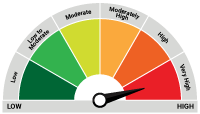Innovation and Excellence: Quantum AMC's Best Practices
Posted On Thursday, Sep 07, 2017
Recently two fund houses announced that, in order to adopt best practice in terms of reporting fund performance, their equity funds will henceforth compare funds’ performance to the Total Return Index (TRI) of the benchmark and not just the price return. While we are happy that more and more AMCs are keen to follow practices that are in the best interest of their investors, we take pride in the fact that we made the decision at inception of our flagship Quantum Long Term Equity Fund (QLTEF) in 2006 that we would use the S&P BSE 30 TRI as the benchmark.
The S&P BSE 30 TRI more accurately represents the returns from the S&P BSE 30 Sensex since it includes the dividends received from the underlying companies. Basically, if you had invested in each of the stocks in the same proportion as their weights in the index, at the end of most periods longer than a few months your return would actually be higher than just the price movements of the stocks, since you’ll have received a few dividend cheques in between. Our goal is to approximate the return you could have achieved, by just owning the stocks of a passive benchmark. It makes no sense to exclude the (sometimes hefty) dividends those companies pay out.
In theory, when a company pays a dividend, its stock price should decline by that amount. Let’s take a simple example and exclude taxation and the actual timing of events: say the market values a company at Rs. 1000. If tomorrow the company takes some of its cash to pay a 10 rupee dividend to you, then the market should value the stock at Rs. 990, because the company now has Rs 10 less in its bank account, and is therefore worth Rs. 10 less. But now you own stock worth Rs. 990 as well as Rs. 10 in cash (again, ignoring tax for this example), so your total return of owning has not been affected. However, your price return makes it seem like you’ve lost money, as the stock has gone from Rs. 1000 to Rs. 990. Make sense?
As there is no such thing as a negative dividend (well, not yet at least – maybe one day some conniving management team will try to get you to pay them for owning their stock!), the S&P BSE 30 TRI is by definition a more difficult benchmark to beat.
At Quantum, we believe aiming for a higher benchmark helps us be more dedicated to our fund management system. While it might make our job more difficult, it brings us closer to our aim: to serve you with the highest standards. Given a tougher benchmark, our processes have to be on the ball at all times.
When you’ve made investments in the past, you’ve likely been told to determine whether the fund is performing or non-performing. We would merely add that it’s also important to see what the fund’s benchmark is. Since inception, QLTEF has never changed its benchmark even once, and you shouldn’t settle for anything less.
| Name of the Scheme & Primary Benchmark | This product is suitable for investors who are seeking* | Risk-o-meter of Scheme |
| Quantum Long Term Equity Value Fund An Open Ended Equity Scheme following a Value Investment Strategy | • Long term capital appreciation • Invests primarily in equity and equity related securities of companies in S&P BSE 200 index. |  Investors understand that their principal will be at Moderate Risk |
* Investors should consult their financial advisers if in doubt about whether the product is suitable for them.
Disclaimer, Statutory Details & Risk Factors:
The views expressed here in this article / video are for general information and reading purpose only and do not constitute any guidelines and recommendations on any course of action to be followed by the reader. Quantum AMC / Quantum Mutual Fund is not guaranteeing / offering / communicating any indicative yield on investments made in the scheme(s). The views are not meant to serve as a professional guide / investment advice / intended to be an offer or solicitation for the purchase or sale of any financial product or instrument or mutual fund units for the reader. The article has been prepared on the basis of publicly available information, internally developed data and other sources believed to be reliable. Whilst no action has been solicited based upon the information provided herein, due care has been taken to ensure that the facts are accurate and views given are fair and reasonable as on date. Readers of this article should rely on information/data arising out of their own investigations and advised to seek independent professional advice and arrive at an informed decision before making any investments. Please visit – www.quantumamc.com/disclaimer to read scheme specific risk factors.
Related Posts
-

Debt Monthly View for January 2025
Posted On Friday, Feb 07, 2025
Bond markets witnessed increased volatility during the last month with the 10-year Government
Read More -

Gold Monthly View for January 2025
Posted On Friday, Feb 07, 2025
In the calendar year 2024, gold demonstrated remarkable performance, yielding a return of ~ 27%.
Read More -

Equity Monthly View for February 2025
Posted On Thursday, Feb 06, 2025
Indian markets witnessed sharp sell-off in the month of January on the back of continued FII selling (USD -8.6Bn in January 25 vs USD -755Mn for CY2024).
Read More



